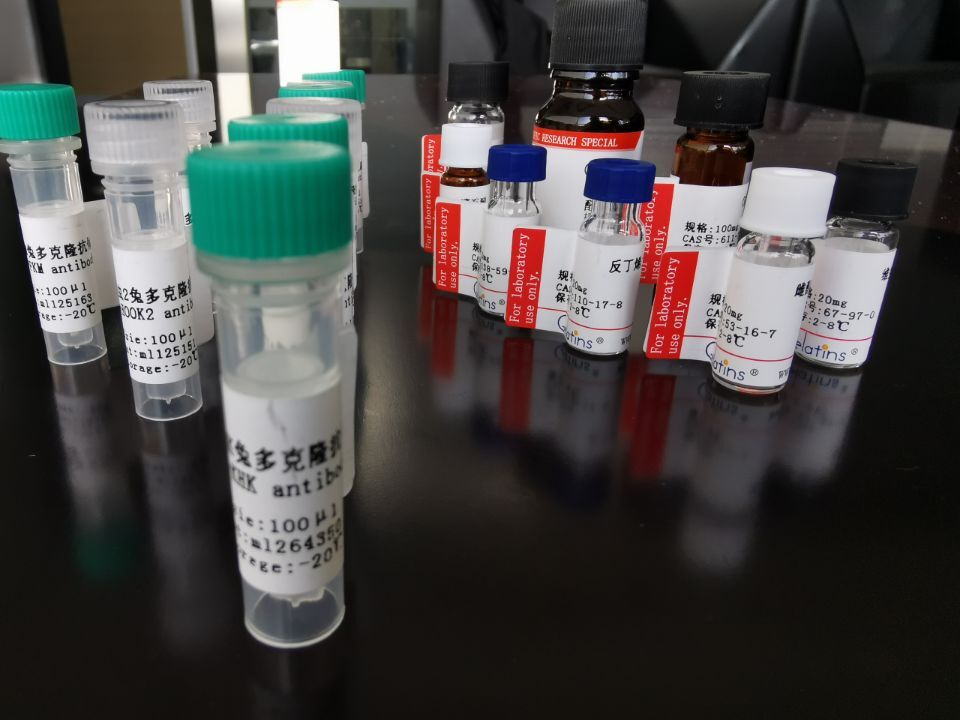中文名稱: SPACA3 抗原(重組蛋白)
英文名稱: SPACA3 Antigen (Recombinant Protein)
別 名: sperm acrosome associated 3; CT54; LYC3; LYZL3; SLLP1; ALLP17; 1700025M08Rik
相關(guān)類別: 抗原
儲 存: 冷凍(-20℃)
概 述
|
Full name: |
sperm acrosome associated 3 |
|
Synonyms: |
CT54; LYC3; LYZL3; SLLP1; ALLP17; 1700025M08Rik |
|
Swissprot: |
Q8IXA5 |
|
Gene Accession: |
BC029867 |
|
Purity: |
>85%, as determined by Coomassie blue stained SDS-PAGE |
|
Expression system: |
Escherichia coli |
|
Tags: |
His tag C-Terminus, GST tag N-Terminus |
|
Background: |
SPACA3 (sperm acrosome associated 3), also known as sperm lysozyme-like protein 1, lysozyme-like protein 3, lysozyme-like acrosomal sperm-specific secretory protein ALLP-17, cancer/testis antigen 54 (CT54), LYC3, SPRASA or LYZL3, is a 215 amino acid protein that participates in the fusion and adhesion of sperm and egg plasma membrane during fertilization. Identified as a novel cancer/testis antigen in hematologic malignancies, SPACA3 has the ability to elicit B-cell immune responses in patients with cancer and is considered a potential target for immunotherapy. A member of the glycosyl hydrolase 22 family which is expressed in testis, placenta and epididymis, SPACA3 exists as two alternatively spliced isoforms; SPACA3 isoform 1 is a single-pass type II membrane protein of the sperm acrosome whereas SPACA3 isoform 2 is a secreted protein. Sperm surface membrane protein that may be involved in sperm-egg plasma membrane adhesion and fusion during fertilization. It could be a potential receptor for the egg oligosaccharide residue N-acetylglucosamine, which is present in the extracellular matrix over the egg plasma membrane. The processed form has no detectable bacteriolytic activity in vitro. |
 購物車
購物車 幫助
幫助
 021-54845833/15800441009
021-54845833/15800441009
